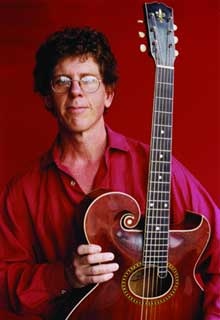Steve Tibbetts, a Minneapolis-based American guitarist, is known for his unique approach to sound-forming and composition. He was born in Madison in Wisconsin in 1954. He was in college when his first two records were made. Although Yr was self-published, it gained some attention, particularly from electric guitar fans. The record had many overdubs. One track could have as many as 50, creating a unique soundscape. Steve Tibbetts, like Brian Eno and other artists, views the recording studio a tool to create sounds. He often works and reworks the sounds he finds, incorporating them into musical tracks. (e.g. the footsteps on Safe Journey’s track “Running”, or the chanting from Nepalese villagers on Big Map Idea’s last tracks). In 1982, Tibbetts made Northern Song for ECM Records. This was an attempt by Tibbetts to be able to record his music in Manfred Eicher’s very fast recording style. ECM albums usually take two days to record. Northern Song received harsh reviews. Tibbetts returned to his old method of recording slowly over several months (or more). Manfred Eicher did not produce his subsequent records. However, they received better reviews. Steve Tibbetts can play acoustic or electric guitars as well as the kalimba. His musical compositions cover many genres and styles, including jazz, rock, fusion and new age. Often, a single composition may contain more than one style or genre. Five albums were released in the 1980s; three in 1990; and two in 2000. Other artists he has collaborated with include Knut Hamre, a Norwegian hardingfele musician, and Choying Drolma, a Tibetan nun. Marc Anderson, Steve’s long-time collaborator, is featured on all of the discography recordings, except for the “Steve Tibbetts.” album. You can purchase a CD-Rom containing a variety of sound textures and loops by Steve Tibbetts. In the middle of the 1980s, Steve Tibbetts stopped performing live. He began to travel extensively in Nepal in the late 1980s, where he met Choying Drolma (a Tibbetan Buddhist nun). Although Cho was not meant to be a commercial recording, it was released and received some positive reviews. Selwa, the second collaboration, was more thoughtfully considered and received very positive reviews. It is an example of a successful meeting between two musical traditions. You can also access user-contributed text under the Creative Commons By–SA License.
